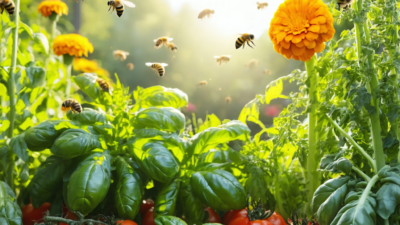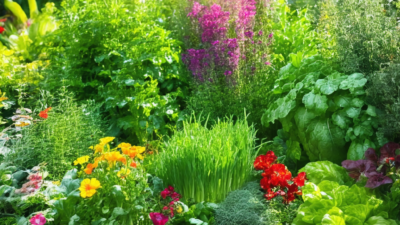Transform Your Garden into a Culinary Wonderland with These Edible Flowers
Gardening isn’t just about growing fruits and vegetables—it’s also a delightful way to experiment with edible flowers. These blooms aren’t just for looks; they can add a burst of flavor, color, and elegance to your meals. Whether you’re a seasoned gardener or a novice, incorporating edible flowers into your garden is a fantastic way to explore new tastes and enhance your culinary creations.
Why Grow Edible Flowers?
Before diving into the list of flowers, it’s worth understanding why these blooms are such a hit in the culinary world. Edible flowers offer:
- A vibrant pop of color to plates
- Unique flavors that can elevate dishes
- Nutritional benefits, as some are rich in vitamins and antioxidants
- An opportunity to reduce food waste by utilizing the entire plant
But not all flowers are safe to eat. It’s crucial to know which ones are edible and how to prepare them properly. Let’s explore our top picks.
The Top 10 Edible Flowers for Your Garden
1. nasturtiums (Tropaeolum spp.)
Nasturtiums are a gardener’s delight, offering both beauty and taste. Their vibrant orange, yellow, and red flowers pack a peppery punch, making them perfect for salads or as a garnish. The leaves are also edible and can be used in soups or stir-fries.
2. pansies (Viola spp.)
Pansies are versatile little flowers that come in a rainbow of colors. Their mild, slightly sweet flavor makes them ideal for decorating cakes, pastries, and salads. They’re also rich in vitamins A and C.
3. calendula (Calendula officinalis)
Calendula, often called marigolds, are a must-grow for any edible flower enthusiast. Their bright yellow and orange petals add a tangy, peppery flavor to dishes. They’re also known for their medicinal properties, including anti-inflammatory effects.
4. lavender (Lavandula spp.)
Lavender is a fragrant flower that doubles as a culinary gem. Its floral, slightly sweet flavor works beautifully in desserts like cakes, ice creams, and jams. Just a pinch can elevate a dish.
5. roses (Rosa spp.)
Roses aren’t just for romance—they’re also edible! Their petals have a delicate floral taste that pairs wonderfully with chocolate or in tea infusions. Opt for organic varieties to avoid any chemical residues.
6. bachelor’s buttons (Centaurea cyanus)
Bachelor’s Buttons, with their striking blue and purple hues, bring a burst of color to any dish. Their mild, slightly sweet flavor makes them perfect for salads or as a garnish.
7. violets (Viola spp.)
Violets are another edible flower with a delicate, slightly sweet taste. They’re often used in desserts like mousses and sorbets but can also add a pop of color to salads.
8. carnations (Dianthus spp.)
Carnations have a spicy, peppery flavor that works well in teas or as a decorative element in desserts. They’re also rich in antioxidants, making them a healthy addition to your diet.
9. chrysanthemums (Chrysanthemum spp.)
Chrysanthemums, with their vibrant colors and crisp flavor, are a great addition to both sweet and savory dishes. Their petals can be used in salads or as a garnish for soups.
10. daylilies (Hemerocallis spp.)
Daylilies offer a unique, slightly sweet taste that pairs well with both savory and sweet dishes. Their flowers can be used in stir-fries or as a colorful addition to soups.
Cooking with Edible Flowers
Incorporating edible flowers into your cooking is easier than you might think. Here are some tips:
- Wash thoroughly: Before using, rinse flowers gently to remove any dirt or pesticides.
- Pull petals: For many flowers, like roses and calendula, it’s best to pull off the individual petals before using them in dishes.
- Add at the end: Since flowers are delicate, add them towards the end of cooking to preserve their color and flavor.
- Experiment: Don’t be afraid to try different combinations. Their flavors can vary, so taste as you go!
From brightening up your plates to adding a burst of flavor to your dishes, edible flowers are a must-have in any garden. Start with one or two varieties and gradually expand your collection. Your culinary creations—and your garden—will thank you!
For more tips on growing and using edible flowers, check out Gardening Know How.





